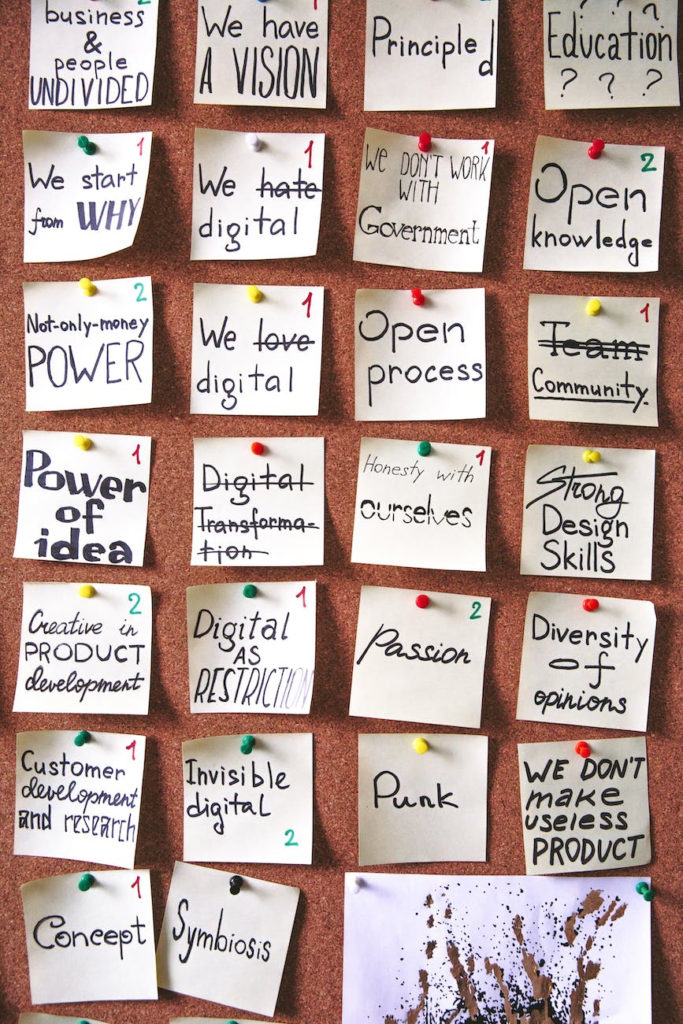LinkedIn is my personal go to source of information, a curated alumni of experts, industry peers and thought leaders (I’m not referring to those trying to spam you SEO services). Following the recent successes of many start-ups in this region and specifically within the mobility sector is compelling, empowering even, yet, also raises some questions.
With media highlighting some massive raise successes this year, other mediums promoting the unicorns of turn, and the power KSA demonstrates in innovative investment strategies, it really does amplify the power of collaboration.
Most of the questions when raising capital start with “How”, I have been delving a little deeper into the understanding of raising capital (as we’ve been on a journey for the past few months).
I’m not writing this entry as a 101 guide to raising investment, I’m not qualified. Since being on this adventure, I’ve been approached by many to share my story and progress. It is a quagmire of discovery, it is also not the only route you should be taking. You have to prove to yourself and your customers your business is needed. My stance is “if you prove your business and meet milestones – then you can at that moment – decide whether or not you want to accept the investment interest you’ll receive”.
When I started ONE MOTO, I never sought a want to raise investment, I believe that to build a successful business, the foundations should be ‘growth through sales’ a simple business model, yet a somewhat antiquated philosophy during these times!? I was mistaken, it was an oversight on my behalf, albeit a positive one.
How? Well our market study and meticulous research into the need for EVs, the want of a ‘switch’ to a cleaner state of mobility was very apparent, yet I had not foreseen the traction we would create so quickly.
Our research turned into a published white paper “Mainstreaming Electric Mobility in the GCC” and evaluating the wants from our potential customers, led to a much faster growth curve than we had anticipated.
The journey of ONE MOTO’s capital raise started with VCs in Dubai, many eager to find out what we had in store, yet their current focus is/was FinTech, MediTech and very few (respectfully) flourish interest from their fund mandate. Something to note, many VCs receive in excess of 1,000 pitches a year, to which they may invest in 3-4. So the odds are against you, unfortunately “no” is a far easier notion to offer you. I’m not a comfortable recipient of “no” so I reflected, maybe it was the pitch: “The UAEs first and only approved EV manufacturer, wanting to raise to meet demand and growth”. Was this enough? Apparently not. My network was later opened to a prism of Angel investors – predominantly those taking a higher risk at a smaller stake – if the appetite is too small, avoid this route, as you’ll fall short, fail to meet your milestones and struggle at your next raise juncture.
One Angel I met helped me a great deal, he has since become my go-to for advice, soon into our first conversation he claimed, “it’s like being asked to invest in Tesla back in 2003”. I was humbled, and I share this quote as a reminder that we can see the road ahead of us.
I’ve often led with a philosophy in business that “you don’t need more money, you need a different strategy”, this holds true, mine was a collaborative network as the new strategy and an unrivalled focus (bypassing the dormant egoist).
Taking #micromobility on a global focus, we’ve seen the celebrated successes of Lime, Bird, TIER Mobility, Lyft, Uber and winced at the ‘hiccups’ that availed themselves in 2020. Yet, the industry remains strong, future mobility is a wash with opportunity. Which can also conflict with your focus and the wrong message prevail.

We know these stories because we read (indirect advertising is trusted a lot more than direct. You’ll trust your friends recommendations above an advert right?!). Yet, when you read the seven/eight figure raises, let it inspire you, not deter you from continuing. There has been some bravado around the raise, so unless you see their annual report and divulge the intimate financials, you’ll never understand the facts behind the figures. Plus, my casing point on this; right now, do you need an eight figure injection? What would you do with it? Don’t fix yourself on this, think about what you need right now and what’s a nice to have. I’ll cover off a few suggestions shortly.
THE PR PEG
The next peg in your quest to raise is vital. PR. As a start up, you might not have the ‘spare cash’ to spend on PR, understandably, and also you might not know which agency/individual to trust with your broadcasts, however, it is an investment, place either the time or the budget to commit to surrounding PR. Unless you have the time, and ability to craft your messages, build a network of journalists and understand how to get your stories published it can be a tough journey. Please consider: As you are meeting new people (investors and their associates) they don’t know you, they do not know your vision and may not know your industry, you need the stories to showcase, answer questions and compose a compelling series of messages surrounding the founders, the industry and indeed your business. You don’t need to be marketing yourselves (direct), let the PR and others talk about how great you are (indirect). If you get the attention of this new network of analysts, investors and executives, these PR pieces help tell other parts of your story (you haven’t had time as you should have been focusing on the pitch).
Even though you have the roadmap firmly in your head, you can vividly see what the next 3,5 or 10 years looks like. It’s because you live your idea. Don’t expect anyone else to get it so quickly, this was a fault in the early months of discussion. Offer investors a tailored, bitesized and extremely focused insight into your business and if they have questions about the future, you’re already prepared with the answers. If they don’t ask, don’t share (not yet).
It would be a consideration to profile yourself and those you are pitching to. Personally, I’m a decisive leader, a creative, a risk taker and our pitch presentations impress. However, the first few meetings I was pitching to analytical personas, those hungry for stats, figures and everything with a percentage glyph. My frontal lobe had these hostage, yet they didn’t showcase so prominently in the decks, so these were revisited immediately.
Your pitch deck will never be complete, and my advice is to tailor it to whom you are presenting, research their fund mandate, the lifespan of their fund and see if they have invested in other businesses similar to yours and if not, why not (I’ll share some questions that are helpful to consider at the end of this).
Try not to see yourself as ‘asking for money’ this isn’t the impression you want to present, we know this. You have an opportunity for an investor to make a great return on their investment. Show it. Prove it. Be confident yet humble and conservative, under promise and over deliver in excess.
The fund you have identified is money requiring to be invested. A committed sum to be deposited with a focused expectation. Try not to be overwhelmed, and do not consider the investment personal wealth! They are funds for your business that over time, if successful, with a huge amount of hard work, and a bit of luck will repay you in personal wealth.
As we continued our journey through the ‘raise maze’ we explored Convertible Notes as an option, offering them to friends and a close business network – the philosophy is, if your friends believe in you, they trust you, this builds external confidence – we did offer convertible notes back in March and secured an empowering raise, which did indeed offer confidence to the VCs.
PLANNING
Plans A, B and C will not rollout as you imagine, creating alternative opportunities and options is key to progression, especially if like methis is your first rodeo.
Do consider this: “Are you looking for a cash injection, or smart investment?” An investor may just be a cash investor, but would you prefer a resource and expertise package? Would the business progress quicker with the right team alongside you?
Recapping upon the journey so far; we received positive interest from Venture Capital, Private Equity, Angel Investors yet we needed commitment and confirmation of traction, “nobody wants to be a busy fool” and I want ROI on my time. The past six months of online meetings has been incredible and I feel somewhat fortunate that Zoom has become a respected way of communicating, a structured agenda of discussions opens up easy conversations on a global scale very different from previous years. We’ve been able to JV with distributors in Kenya, Chile, UAE, Nepal, Sri Lanka and the UK, and explore opportunities in a multitude of other countries.
STAY FOCUSED.
With so much opportunity it can lead to an endless array of excitement, but don’t lose track of where you started and the original focus. You aren’t on the home stretch yet.
They say “raising capital is a full time job”, and it can be if you let it. I would recommend reading the 4-hour work week and see if you can “batch” your updates and conversations to ensure everyone you speak to stays up to date with your progress and you can continue to run your business. Remember, an idea is something everyone has, yet execution is something many cannot.
After several months of meetings and ‘progressive waiting’ I asked more questions surrounding investment and the different avenues. One of them led me to Eureeca.com an equity crowd-funding platform, intrigued I began to research the backgrounds of the company, and more importantly the people behind the brand, as a team of highly successful investors and business people, I convinced them to listen to what I had to say. They don’t take every business or any ‘idea’, they have a selection process and a strong reputation to uphold. I had the belief and needed to showcase ONE MOTO being a business for crowd-investment as our business is for the mobility of people, of all ages – we aim to provide mobility for all. We suited their mandate and fortunately we were selected.

The crowdfunding process can be up to five months – it has opened me up to a deeper appreciation – ONE MOTO is a business built on five core values; Environment, Technology, Convenience, Affordability and Experience, these are shared by our customers, our friends and a lot more people we haven’t met yet. This was a great avenue to tread, harnessing the power of a collaborative network to raise capital for a greater plan. VCs you can take your time making your decisions, this progressive company is charging ahead, with the backing and commitment from the people we built the business for.
VALUATION
How do you value a company? It depends on who you ask. So ask everyone. Sales, DCF, MVP, Market, Founders, all appreciated, yet it holds the same equation as how much does something cost? It depends on how much you’re willing to pay for it.
If you get enthused by owning a $billion company great (that’s your motivator, it’s good to know), but your ego shouldn’t be entertained by this. Milestones of progression will demonstrate your true value. Allowing you to dilute less equity, maintain the focus and vision of the business. After all it is the execution that promotes the value.
THE KILLER QUESTION
My closing point which has caught me out a few times, is this one simple question “what do you want from this business?”. The way to answer it isn’t straight forward, you should know what your motivator is in general (the tricky part), wealth, making a difference, notoriety, a Nobel prize? Whatever if your driver, make sure it is true, candid and explored.
If your plan is to exit at Series B, then state this, when asked why, you’ll have the pre-thought answers on hand.
Raising capital isn’t easy, nor should it be. Present a value add to an investment portfolio, make sure you are solving a problem, or solving a problem better than others, and you’ll get there. However, consider this again: Do you really need more money, or do you need a different strategy?
If you are starting out in business, ask yourself this question, “Do I invest the next decade of my life to try and make this idea work, or should I invest my money in others who can make my investment work for me?”. #hindsight.
Thank you for reading.
A.












